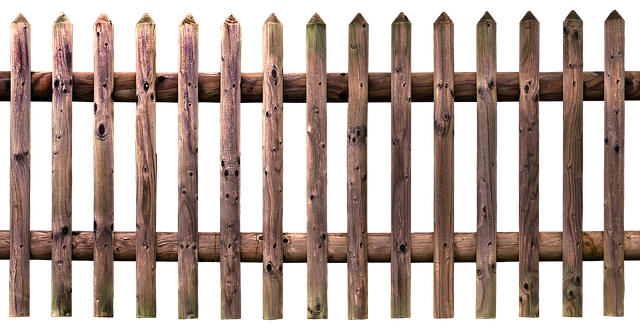Coastal areas present unique challenges for fencing due to harsh weather conditions and corrosive saltwater environments. Understanding these factors is essential for selecting durable wooden fencing that can withstand the elements and provide long-lasting protection. This article explores effective strategies to enhance fence longevity in coastal settings, focusing on superior materials, thoughtful species choices, installation best practices, and simple yet vital maintenance tips.
- Understanding Coastal Weather's Impact on Fencing
- Advantages of Durable Wooden Fencing Materials
- Choosing the Right Wood Species for Coastlines
- Installation Techniques for Longevity in Saltwater Environments
- Maintenance Tips to Extend Fence Lifespan
Understanding Coastal Weather's Impact on Fencing
Coastal areas are known for their harsh and unpredictable weather conditions, which can significantly impact any structural material, including fencing. Strong winds, salt water, and varying temperatures create a unique challenge when it comes to choosing durable outdoor materials. Wooden fences, in particular, require careful consideration as they can be more susceptible to rot, warping, and insect infestation due to the constant exposure to these elements.
Understanding how coastal weather affects fencing is key to making informed decisions. Saltwater corrosion is a significant concern, leading to faster deterioration of wooden posts and panels. Strong winds can cause excessive stress on fences, requiring robust construction to withstand frequent storms. Additionally, rapid temperature changes can cause wood to expand and contract, potentially leading to cracks and loose connections over time. Thus, selecting the right type of wood and ensuring proper installation is crucial for a long-lasting coastal fence.
Advantages of Durable Wooden Fencing Materials
Durable wooden fencing materials offer an array of advantages for coastal areas, where traditional fences often face harsh environmental challenges. Firstly, they are naturally resistant to corrosion and rust, a common issue with metal fencing in salty, humid environments. This longevity ensures that the fence remains strong and secure over time, without the need for frequent replacements or repairs.
Additionally, wooden fences can be designed to withstand the relentless winds and storms that coastal regions often experience. Their flexibility allows them to absorb impact without breaking, providing a more stable barrier against extreme weather conditions. Moreover, many modern treatments and finishes protect the wood from moisture damage, further extending its lifespan and maintaining the fence’s aesthetic appeal.
Choosing the Right Wood Species for Coastlines
When selecting wood for coastal fencing, understanding the unique challenges posed by saltwater and high humidity is crucial. Not all woods are created equal in this regard, so choosing the right species is essential for long-lasting durability. Certain types of wood, like cedar and redwood, naturally resist rot, decay, and insect damage due to their inherent chemical composition and dense structure. These are excellent choices for coastal areas as they can withstand harsh weather conditions without compromising strength or aesthetics.
Additionally, treating wooden fences with appropriate preservatives before installation can significantly enhance their resistance to coastal elements. Water-repellent treatments, such as stains or sealers, form a protective barrier against moisture, ensuring the wood retains its integrity and beauty for years to come.
Installation Techniques for Longevity in Saltwater Environments
When installing wooden fencing in coastal areas exposed to saltwater, specialized techniques are essential to ensure longevity. One effective method is pre-treating the wood with marine-grade preservatives and sealers before assembly. These treatments create a protective barrier against moisture and salt corrosion, slowing down the aging process. The installation process should involve securing posts firmly into concrete bases, as this provides stability against harsh weather conditions and high tides.
Additionally, using stainless steel hardware and brackets minimizes rust potential. Proper spacing between vertical posts is critical; adequate gaps allow for wood expansion and contraction without stress or warping. Regular cleaning with mild detergent and inspection for any signs of rot or damage are crucial maintenance steps to extend the fence’s lifespan in these challenging environments.
Maintenance Tips to Extend Fence Lifespan
To ensure your durable wooden fence stands strong against the coastal elements, regular maintenance is key. Start by regularly cleaning the fence with a soft brush or cloth to remove salt spray and other debris that can weaken the wood over time. Avoid using harsh chemicals, as they can strip away the protective finish and damage the fence.
Apply a fresh coat of water-repellent sealer or stain every 1-2 years, depending on exposure. This will help shield the wood from moisture, UV rays, and insect damage. Keep an eye out for any signs of rot, cracks, or loose boards, and repair them promptly using high-quality replacement parts. Regular inspection and quick action will significantly extend the life of your coastal wooden fence.
